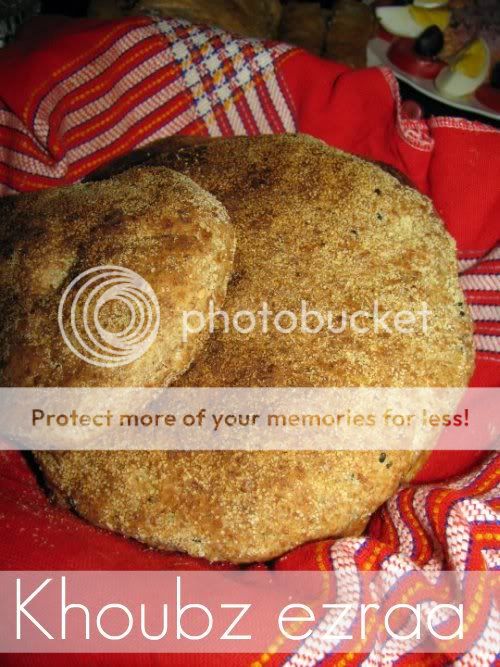Rye grains have the same elongated shape as wheat grains. The grains may be used whole, cracked, or rolled like oats, but they are generally ground into flour. Rye flour comes in several different varieties. Light rye flour has most of the bran removed. Dark rye flour retains most of the bran and germ and is a source of magnesium, trace minerals, folic acid, thiamin, and niacin. Rye flour retains more nutrients than wheat due to the difficulty in separating the germ and bran from the endosperm of rye
Rye has a very distinctive, sour flavor. Many people find this strong taste unappealing, especially since there is very little that one can do to make rye sweeter.
Rye is a very good source of dietary fiber, phosphorus, magnesium, manganese, protein and vitamin B1. Rye is also a rich source of lignans, one of the major classes of phytoestrogens, estrogen-like chemicals that also act as antioxidants.
Khoubz ezraa
(Algerian rye bread)
- 500g - about 2 cups of rye flour
- 2 tsp of yeast
- 1 TBS salt
- 20mL - 4 tsp oil
- 3/5 cup warm water
- Nigella seeds (handful)
- large grain semolina for the outside
• For this recipe, you need a clay plate or cast iron baking dish.
- The day before, mix the salt, seeds, with flour and yeast. Pour water slowly so that the dough is firm.
- Cover with a cloth and let stand overnight.
- The next day, knead the dough again for a few moments.
- Next, form a ball, flatten to form the loaf.
- Coat the loaf with little oil then the semolina.
- Bake the bread on the tadjine inside the oven for about 30 - 45 minutes.


hmmm, cela donne l'eau à la bouche...
ReplyDeleteWow, the bread sounds amazing and so healthy. I can imagine the wonderful smell when baking it.
ReplyDelete